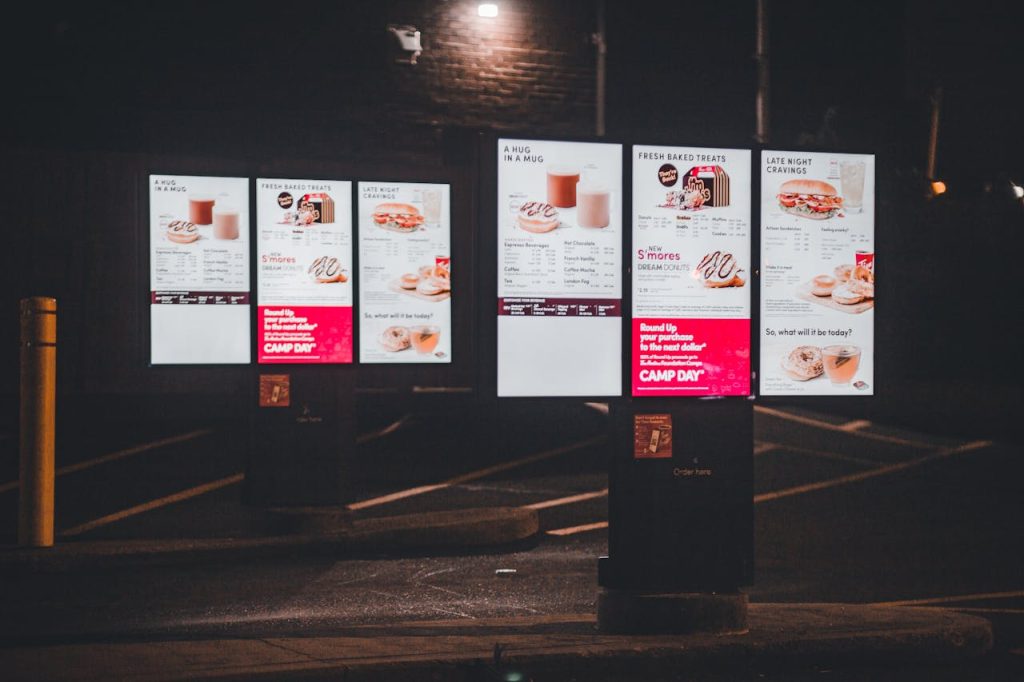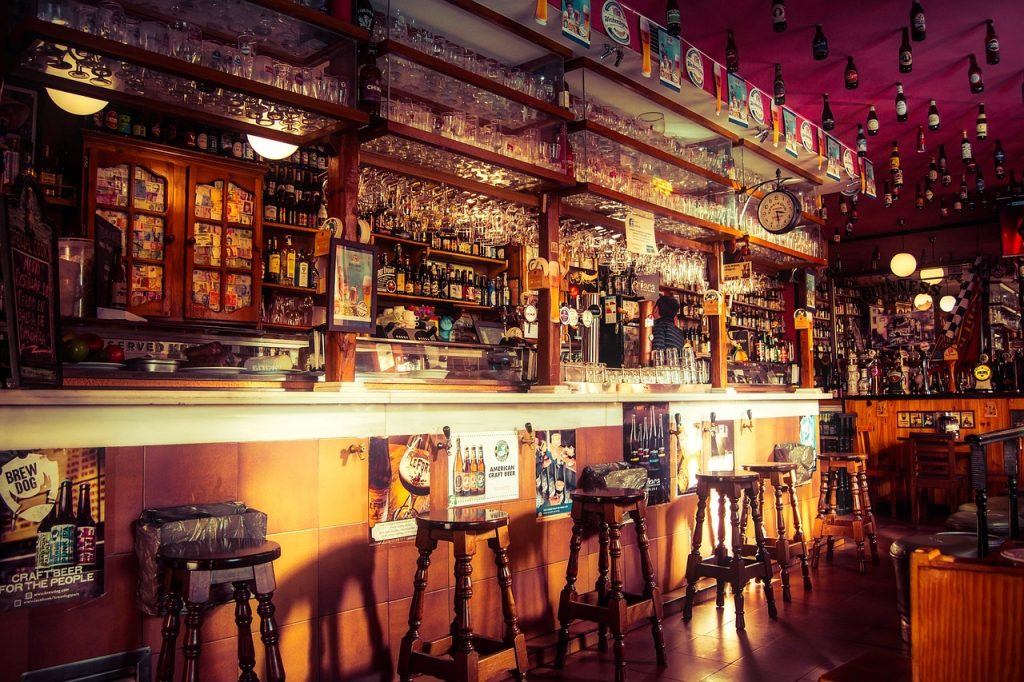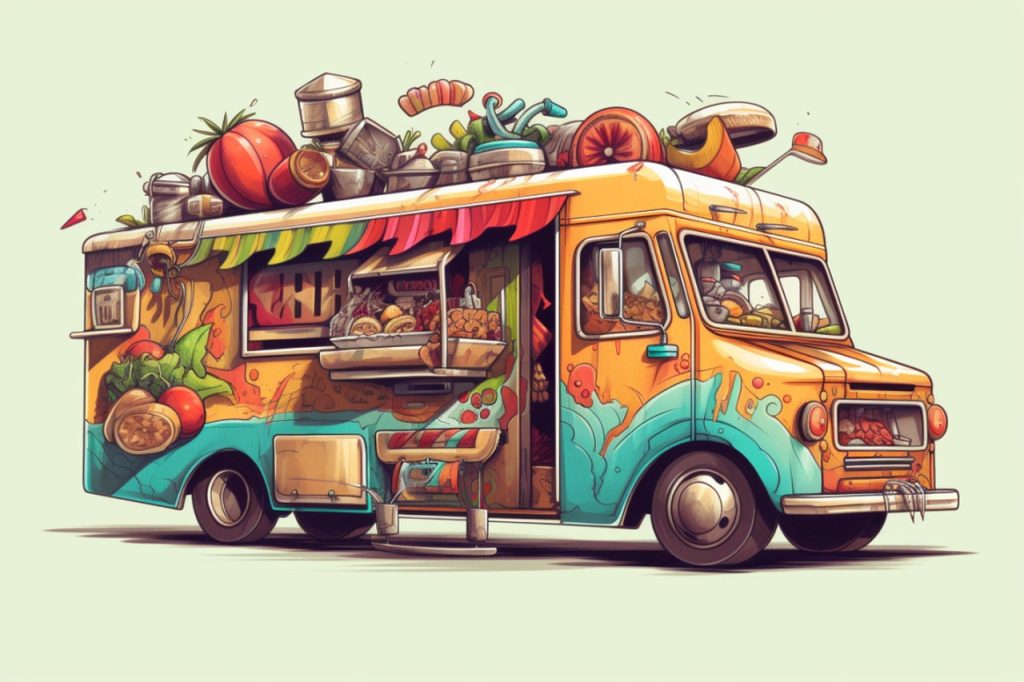Traditional menus are becoming a thing of the past. Reshape the way your customers order and dine with digital menus and give them an experience of a lifetime. Digital menus are electronic versions that are displayed on digital devices in place of traditionally printed menus.
Types of Digital Menus
Tablet-Based Menus
Customers can browse the menu, place orders, and even settle the bill using tablets that are set up on the tables. The interactive features of the digital menu improve the dining experience. Chili’s Grill & Bar has integrated tabletop tablets for ordering and payment, providing customers with a digital menu experience. This has not only improved the dining experience but also presented opportunities for upselling. But the initial cost of setting this up might be an issue.
Kiosk Menus
Within the restaurant, clients can independently explore the menu, personalize their orders, and place them without interacting with staff thanks to these kiosks. Panera Bread has implemented digital kiosks and an online ordering system to streamline the ordering process. Customers can customize their orders digitally, and this has contributed to increased efficiency and order accuracy, potentially leading to higher revenue. However, for some patrons, the absence of human interaction may diminish the overall dining experience, especially in situations where personalized recommendations are valued.
QR Code Menu
Customers can use their smartphones to scan QR codes that are placed on tables or printed materials. This allows users to view menu items conveniently and virtually by opening a digital menu on their devices. Denny’s, a well-known diner-style restaurant chain, has embraced QR code menus. The drawback of using QR code menus is that they can be manipulated and people with malicious intent can be a threat to security.
Smartphone Applications
You can provide mobile applications that will let your customers scan the menu and order. Mobile applications provide a smooth and customized experience. Shake Shack introduced a mobile app for ordering ahead and customization of orders. The app not only offers convenience to customers but also encourages them to explore the menu and potentially order more items, contributing to increased revenue. Mobile apps require more maintenance and you might have to update them regularly.
Benefits of using digital menus
Dynamic Updates
It can be easily modified in real time to reflect adjustments made to menu items, prices, or specials. This flexibility will help you to adapt to evolving customer preferences and seasonal variations.
Interactivity
Clients will get a more engaging experience because of the interactive components like images, videos, and links. You can also integrate multimedia content such as videos or slideshows that showcase your restaurant’s story, sourcing practices, or behind-the-scenes footage. You can also gamify the menu by adding quizzes to make it more interactive.
Long-Term Savings
Since digital menus don’t require frequent printing and reprinting, they may end up being more economical over time. Digital menus can also help you upsell and may also come to your rescue if you ever want to rebrand or change your menu seasonally.
Analytics
Digital menus can track customer interactions, such as the time spent on the menu, the number of clicks, and the items viewed. These metrics provide insights into which menu items are popular or garner the most interest. Digital menus can monitor the conversion rates of individual items, showing the frequency with which customers who viewed the item went on to place an order. This information is useful for marketing initiatives and menu redevelopment.
Multilingual Support
Digital menus have the ability to serve a wide range of clientele in several languages with ease. You don’t have to worry about your menu being misinterpreted.
Reduced Contact
Digital menus can assist in minimizing customers’ direct physical contact with menu items in the context of health issues. This has been relevant since the onset of Covid.
The downside of Physical menus
Limited updates
Physical menus aren’t flexible enough to reflect changes immediately. It’ll be difficult for you to update anything on physical menus. This can result in customer dissatisfaction when they discover that the item they wanted is not available or that prices have changed and communicating the same to them every time might be difficult.
Limited Space
The quantity of information and details that you can include for each dish may be limited in a physical menu. Customers may feel they lack sufficient information to make informed choices about the items they want to order.
Environmental Impact
Repeated printing adds to paper, water, and energy wastage. Physical menus are often designed for single use, especially in fast-food or casual dining establishments. This single-use culture contributes to the accumulation of disposable items in landfills, adding to the global waste problem. If you’re using physical menus then it may affect the image of your restaurant negatively and may also send away those customers who are conscious about the environment.
Less engaging
Physical menus present static content and they also lack voice commands and other attractive features like graphics and animation. Some customers might find it boring and may get dissatisfied with it.
In conclusion, the digital menu revolution is reshaping the way we dine, offering unparalleled convenience, interactivity, and sustainability. From tablet-based innovations to QR code simplicity, tech-savvy options are transforming customer experiences and boosting restaurant efficiency. The benefits are undeniable: real-time updates, engaging multimedia, and invaluable analytics, give businesses a competitive edge. Bid farewell to the limitations of physical menus—embracing the digital era ensures adaptability, long-term savings, and a reduced environmental footprint. As we navigate the ever-evolving landscape of dining preferences, one thing is clear: the future is digital, and those who embrace it are set to thrive in the tech-driven culinary world.
By now, you would’ve learned a lot from all three blogs. Implement them, and if you haven’t checked the previous two blogs yet, do so and comment on the below-mentioned text once you do.




